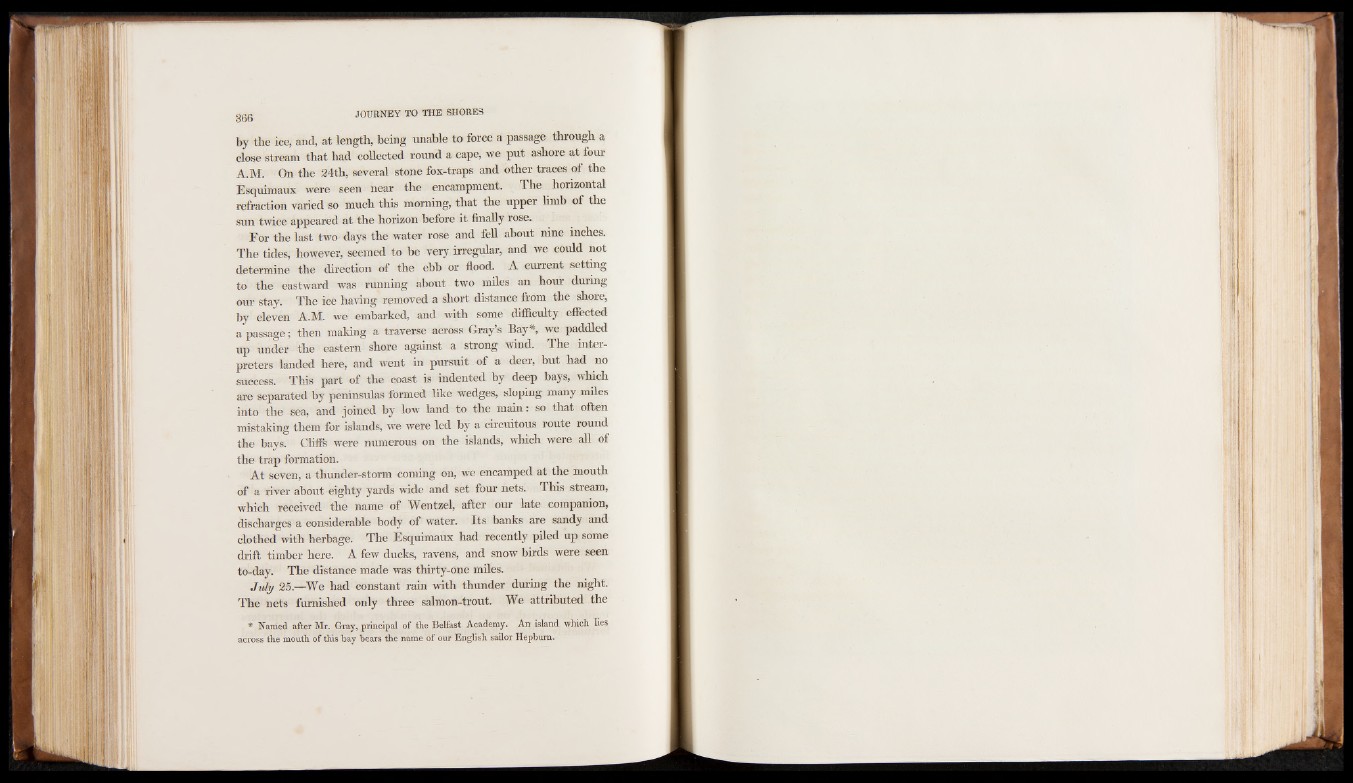
JOURNEY TO THE SHORES
by the ice, and, at length, being unable to force a passage through a
close stream that had collected round a cape, we put ashore at four
A.M. On the 24th, several stone fox-traps and other traces of the
Esquimaux were seen near the encampment. The horizontal
refraction varied so much this morning, that the upper limb of the
sun twice appeared at the horizon before it finally rose.
For the last two days the water rose and fell about nine inches.
The tides, however, seemed to be very irregular, and we could not
determine the direction of the ebb or flood. A current setting
to the eastward was running about two miles an hour during
our stay. The ice having removed a short distance from the shore,
by eleven A.M. we embarked, and with some difficulty effected
a passage; then making a traverse across Gray’s Bay* we paddled
up under the eastern shore against a strong wind. The interpreters
landed here, and went in pursuit of a deer, but had no
success. This part of the coast is indented by deep bays, which
are separated by peninsulas formed like wedges, sloping many miles
into the sea, and joined by low land to the main: so that often
mistaking them for islands, we were led by a circuitous route round
the bays. Cliffs were numerous on the islands, which were all of
the trap formation.
At seven, a thunder-storm coming on, we encamped at the mouth
of a river about eighty yards wide and set four nets. This stream,
which received the name of Wentzel, after our late companion,
discharges a considerable body of water. Its banks are sandy and
clothed with herbage. The Esquimaux had recently piled up some
drift timber here. A few ducks, ravens, and snow birds were seen
to-day. The distance made was thirty-one miles.
July 25.—We had constant rain with thunder during the night.
The nets furnished only three salmon-trout. We attributed the
* Named after Mr. Gray, principal of the Belfast Academy. An island which lies
across the mouth of this bay bears the name of our English sailor Hepburn.